SpaceX Dragon Delivers NASA Cargo to Space Station
A SpaceX Dragon cargo ship arrived at the International Space Station (ISS) today (May 6) to deliver nearly 3 tons of NASA supplies to the orbiting laboratory.
Astronauts on the station captured the uncrewed Dragon cargo ship with a robotic arm at 7:01 a.m. EDT (1101 GMT) as both spacecraft sailed 254 miles (408 kilometers) above the north Atlantic Ocean. The spacecraft is carrying about 5,500 lbs. ( 2,495 kilograms) of experiments and other supplies for the station's six-person Expedition 59 crew.
"We welcome to ISS the Dragon spacecraft as part of the SpaceX-17 cargo mission," station astronaut David Saint-Jacques of the Canadian Space Agency radioed Mission Control making the catch with the station's Canadian-built Canadarm2 robot arm.
Related: See the Evolution of SpaceX's Rockets in Pictures
"As a Canadian, I'm proud every time we use Canadarm2 for free-flyer capture," Saint-Jacques added. "My crew and I are proud to be part of this today, representing the dedicated teams of talented people who every day make the seemingly impossible a reality."
By 9:32 a.m. EDT (1332 GMT), flight controllers on Earth had used the station's robotic arm to attach Dragon to an available berth on the station so astronauts can begin unloading supplies.

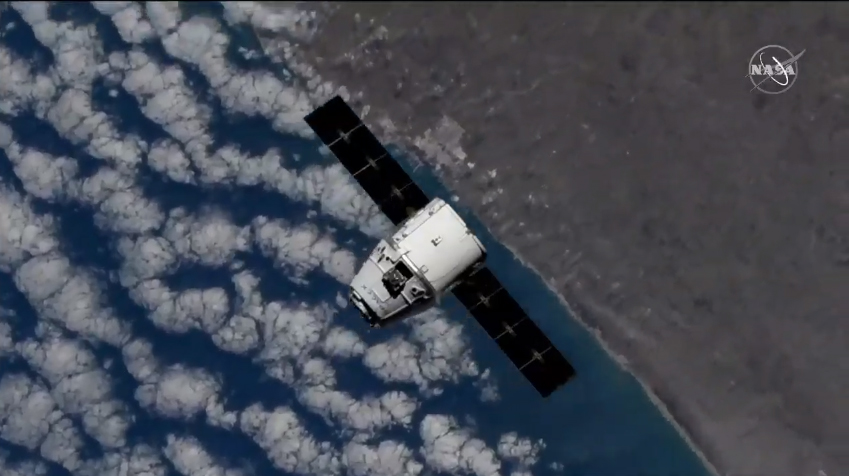
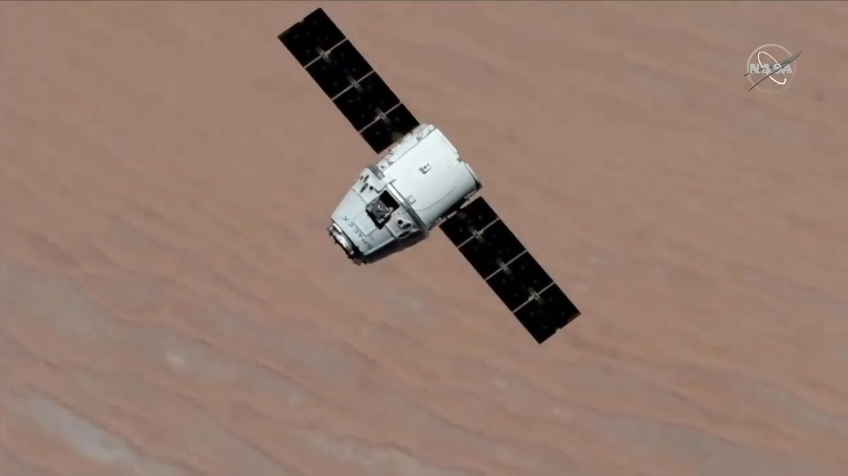
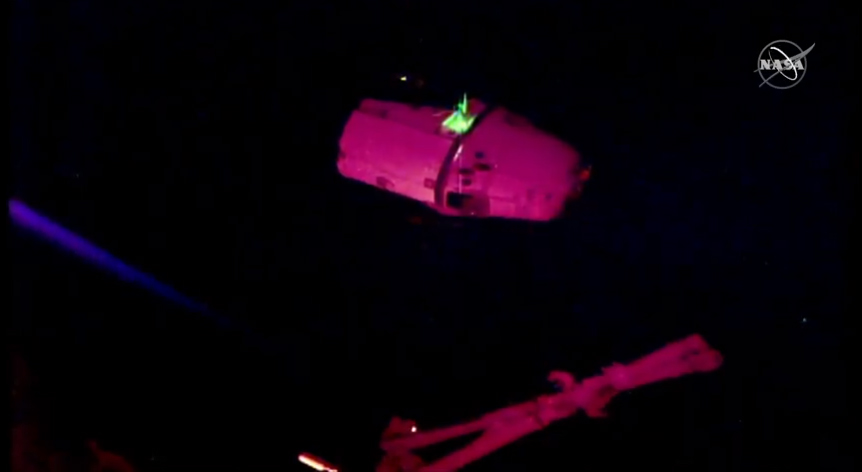
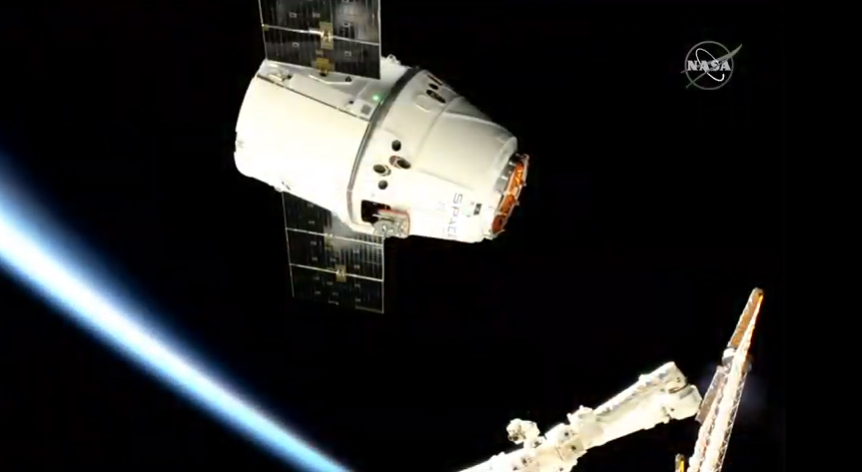
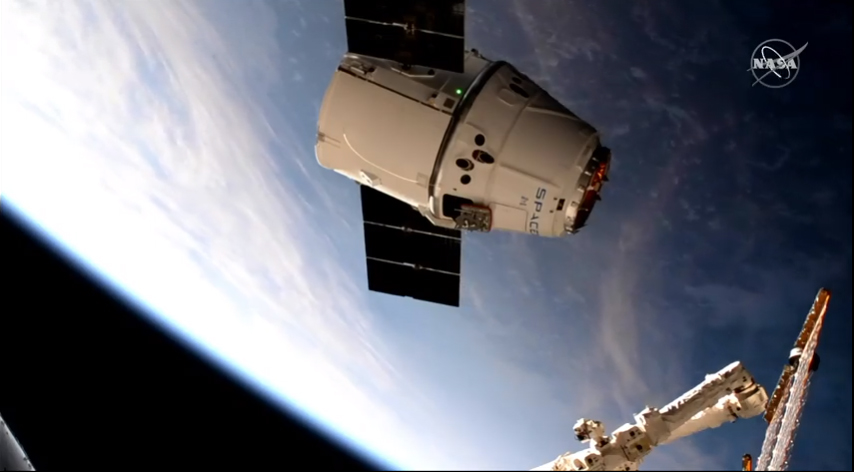
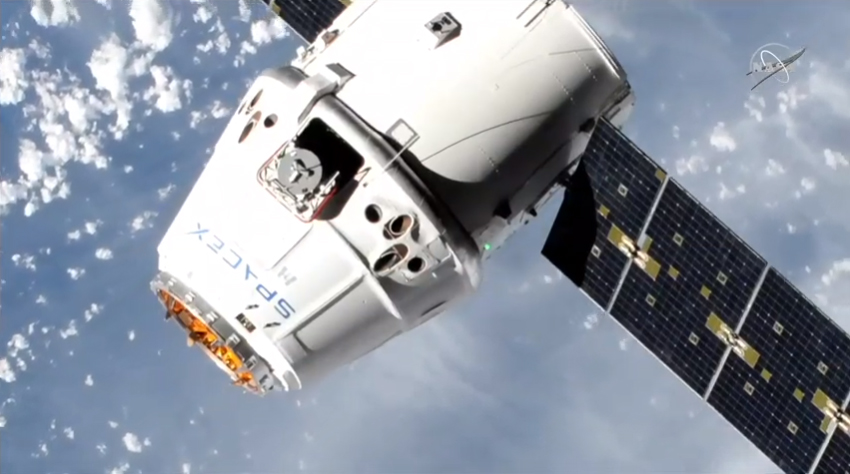
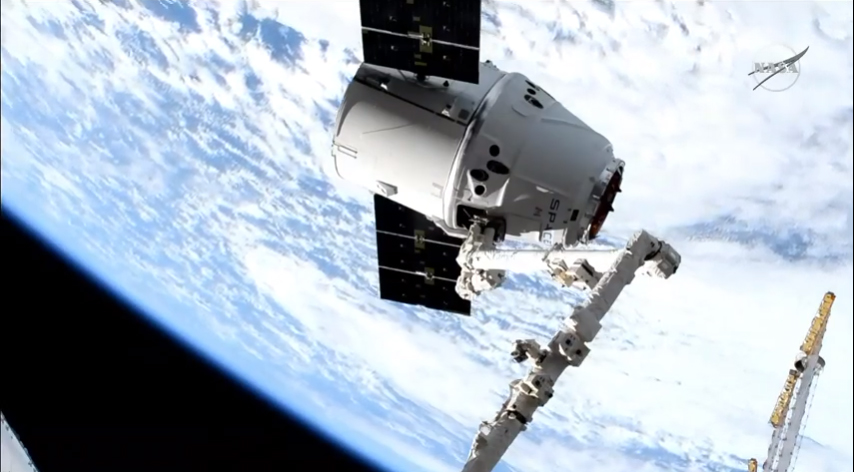
SpaceX launched the Dragon cargo ship early Saturday (May 4) atop a Falcon 9 rocket from Cape Canaveral Air Force Station in Florida following just over a week of delays. As the spacecraft neared the station today, astronauts spotted a small cable on the craft that was supposed to detach during launch, but it posed no problem for docking, NASA officials said.
Get the Space.com Newsletter
Breaking space news, the latest updates on rocket launches, skywatching events and more!
"It's noteworthy that this is the second flight of this particular capsule, which flew the SpaceX-12 mission," Saint-Jacques said. The spacecraft has a small space station emblem on its side indicating that previous flight in 2017.
Dragon's current delivery mission is called CRS-17 by NASA and SpaceX-17 by the company. As that name suggests, it is the seventeenth cargo run for NASA by SpaceX since commercial resupply flights began in 2012.
The spacecraft is carrying a host of new science payloads for use inside and outside the International Space Station.
Among those experiments are NASA's Orbiting Carbon Observatory-3, an instrument to be installed on the station's exterior to track carbon dioxide levels in Earth's atmosphere. The spacecraft is also carrying so-called "tissue chips" to simulate the behavior or human organs in space, as well series of student-designed Genes in Space experiments to study you yeast DNA repairs itself in space.
Dragon will stay linked to the station for about a month before being packed up with experiment samples and other gear and returning to Earth. The spacecraft has a heat shield and parachutes that allow it to survive reentry.
SpaceX is also developing a crewed version of the Dragon spacecraft. The company launched its first Crew Dragon capsule test flight earlier this year and hopes to begin astronaut flights by the end of 2019.
But before those crewed flights can begin, SpaceX must complete an investigation into why its Crew Dragon spacecraft exploded during a ground test of its emergency abort system last month. The April 20 test at a SpaceX landing pad at Cape Canaveral Air Force Station was uncrewed and no injuries were reported.
Once SpaceX completes that investigation, the Hawthorne, California-based company also plans to launch an in-flight abort test of an uncrewed Crew Dragon spacecraft before attempting its first astronaut mission test flight for NASA.
- See the Evolution of SpaceX's Rockets in Pictures
- In Photos: The Amazing Triple Rocket Landing of SpaceX's Falcon Heavy
- 6 Fun Facts About Private Rocket Company SpaceX
Email Tariq Malik at tmalik@space.com or follow him @tariqjmalik. Follow us @Spacedotcom and Facebook.
Join our Space Forums to keep talking space on the latest missions, night sky and more! And if you have a news tip, correction or comment, let us know at: community@space.com.

Tariq is the Editor-in-Chief of Space.com and joined the team in 2001, first as an intern and staff writer, and later as an editor. He covers human spaceflight, exploration and space science, as well as skywatching and entertainment. He became Space.com's Managing Editor in 2009 and Editor-in-Chief in 2019. Before joining Space.com, Tariq was a staff reporter for The Los Angeles Times covering education and city beats in La Habra, Fullerton and Huntington Beach. In October 2022, Tariq received the Harry Kolcum Award for excellence in space reporting from the National Space Club Florida Committee. He is also an Eagle Scout (yes, he has the Space Exploration merit badge) and went to Space Camp four times as a kid and a fifth time as an adult. He has journalism degrees from the University of Southern California and New York University. You can find Tariq at Space.com and as the co-host to the This Week In Space podcast with space historian Rod Pyle on the TWiT network. To see his latest project, you can follow Tariq on Twitter @tariqjmalik.









